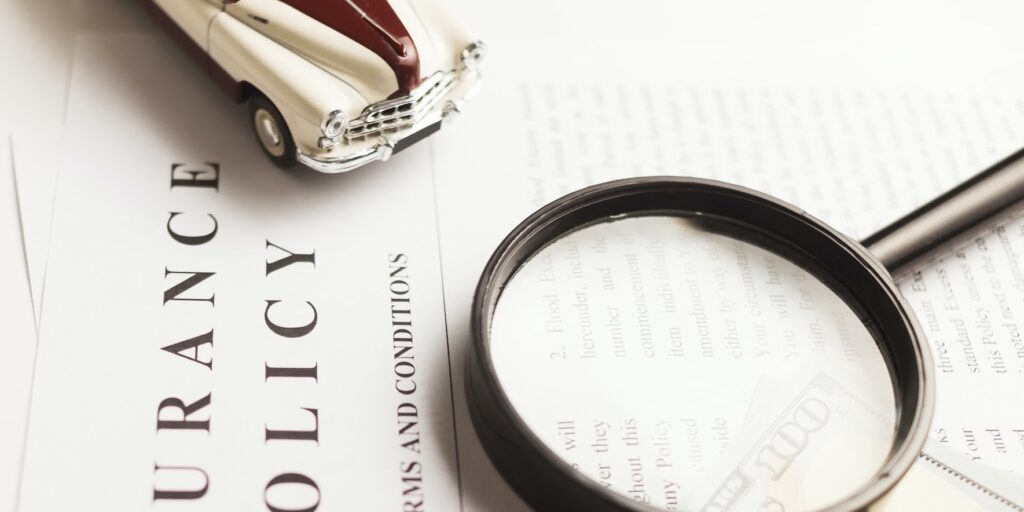- Poorly shovelled sidewalks will lead to slip and falls this winter - December 11, 2024
- Brain injuries are costly on an emotional and physical level - November 22, 2024
- Long-term disability payments could come with a tax liability - October 23, 2024
By Paul Russell, LegalMatters Staff • Many Canadians love to drive, whether to get to work or take a vacation to a favourite destination. Transport Canada states that more than 26.2 million vehicles were on our nation’s roadways in 2021, up almost two per cent from the previous year.
While most of those trips ended safely, some people were not so lucky. According to the federal government there were more than 153,000 personal injury accidents across the nation in 2022, leading to 2,583 fatalities and 222,625 injuries.
“Those numbers show why it is essential that drivers understand their insurance policy,” says Ontario personal injury lawyer Joshua Goldberg. “It is important that you have the correct coverage in case you are involved in a collision and left with life-altering injuries.”
Every vehicle needs insurance
He says the first thing to know is that all motorists in Ontario are legally required to have auto insurance.
“Fines for vehicle owners, lessees and drivers who do not carry valid auto insurance can range from $5,000 to $50,000,” says Goldberg, principal of Joshua Goldberg Law. “Your driver’s licence can be suspended and your vehicle impounded if you drive without valid auto insurance.”
If you are injured in an accident while driving or as a passenger in an uninsured vehicle, you may not be allowed to sue the at-fault driver for compensation, he says.
“And if you are at fault for an accident that causes injury or death, you may be held personally responsible for other people’s medical costs and other losses,” says Goldberg.
He explains that four types of coverage are offered by a basic insurance policy, starting with third-party liability.
“This section of the policy protects you if someone else is killed or injured or their property is damaged,” Goldberg tells LegalMattersCanada.ca. “If you are sued, it will pay for settlements up to the coverage limit and the costs of settling the claims.”
- Landlords may be liable for injuries in rental properties
- Treat concussions seriously; your life may depend on it
- Statutory deductibles ‘revictimize’ people involved in accidents
While everyone must carry a minimum of $200,000 in third-party liability coverage, he says it is a good idea to increase that.
“Lawsuits arising from a severe accident can easily exceed that $200,000 limit,” Goldberg says. “I would advise drivers to increase that coverage to a least $1 million to ensure they are protected. The increased cost for that extra security is really not that much.”
The second type of coverage in a basic plan is for statutory accident benefits, he says.
“This section of the policy provides you with benefits if you are injured in an accident, regardless of who caused the accident,” Goldberg says. “This includes supplementary medical, rehabilitation and attendant care, caregiver, non-earner and income replacement benefits.
Most coverages can be increased
“Options exist to increase most of these coverages,” he adds.
Goldberg says the third type of basic coverage is direct compensation-property damage (DC-PD) coverage.
“This section of your policy covers damage to your vehicle or its contents. It also covers the loss of use of your vehicle or its contents if another person was at fault for the accident,” he says.
Goldberg explains it is called direct compensation because even though someone else causes the damage, you collect directly from your insurer.
“Most policies don’t have a direct compensation property damage deductible, but you can add one to lower your premium,” he says.
Goldberg adds that DC-PD section coverage only applies if:
- the accident was in Ontario;
- there was at least one other vehicle involved; and
- at least one of the other vehicles is also insured by an insurance company licensed in Ontario.
“If these conditions are not met, then you can make a claim through your collision coverage, whether or not you are at fault. If you do not have collision coverage, you may be able to pursue recovery from the at-fault driver,” he says.
Goldberg says the final component of a basic auto plan is uninsured automobile coverage.
“This section covers you and your family if you are injured or killed by a hit-and-run driver or an uninsured motorist,” he says. “It also covers damage to your vehicle caused by an identified uninsured driver.”
Insurers can refuse to pay for accidents
Goldberg says it is also important to understand what coverages can be denied.
“Insurance companies are allowed to deny payment for loss or damage after an accident if the driver was unable to maintain proper control of the vehicle because they were under the influence of alcohol or drugs,” he says.
Goldberg says other reasons for insurance providers to deny coverage arise if someone is convicted of:
- Causing death or injury by criminal negligence.
- Failing to stop at the scene of an accident.
- Driving a vehicle when impaired or with more than 80 mg/100 ml of alcohol in their blood.
- Refusing to provide police with a breath sample.
- Causing injury when driving a vehicle while impaired or with over 80 mg/100ml of alcohol in the blood.
- Driving the vehicle while disqualified from doing so.
Insurance companies may also deny coverage if you are moonlighting as a rideshare or delivery driver without updating your policy, Goldberg says.
“Except for certain accident benefits, there is no coverage if your vehicle is used for ridesharing,” he says. “If you want to work for firms such as Uber or Lyft, you should check with your auto insurer to ensure you have coverage that protects the driver, passenger and others. The same rules apply if you are delivering food.”

